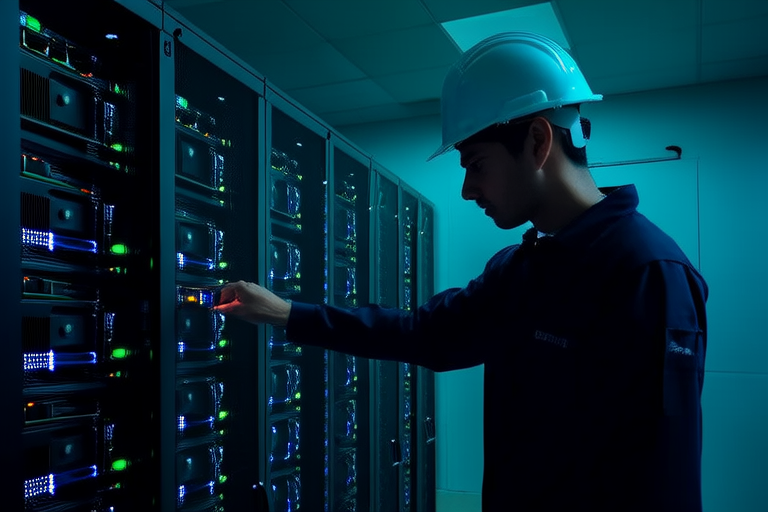Introduction
In the rapidly evolving landscape of digital transformation, cloud computing and edge computing have emerged as two pivotal technologies reshaping how data is processed, stored, and utilized. Cloud computing refers to the delivery of computing services over the internet, enabling users to access resources such as storage, processing power, and applications without owning physical infrastructure. On the other hand, edge computing involves processing data closer to its source, minimizing the need for data to travel long distances to centralized servers. While both technologies excel in their respective domains, their integration creates a powerful synergy that addresses modern challenges in data processing. This combination is revolutionizing industries by enhancing efficiency, reducing latency, and enabling real-time decision-making.
Understanding Cloud Computing
Cloud computing has become the backbone of modern IT infrastructure, offering scalable and flexible solutions for businesses of all sizes. At its core, cloud computing provides on-demand access to shared pools of configurable resources, including servers, storage, databases, and software applications. These resources are hosted in remote data centers and managed by third-party providers, allowing organizations to focus on innovation rather than maintaining hardware.
One of the primary advantages of cloud computing is its scalability. Businesses can easily scale their operations up or down based on demand, ensuring optimal resource utilization without over-provisioning. Additionally, cloud services offer significant cost-efficiency by eliminating the need for upfront capital investments in hardware and reducing ongoing maintenance expenses. Centralized data management is another key benefit, as it enables seamless collaboration, enhanced security protocols, and streamlined backups.
For large-scale data operations, such as big data analytics and machine learning, cloud computing provides the computational power and storage capacity required to process vast amounts of information. Its ability to handle complex workloads makes it indispensable for industries like healthcare, finance, and e-commerce, where data-driven insights drive strategic decisions.
Exploring Edge Computing
Edge computing represents a paradigm shift in data processing by bringing computation closer to the source of data generation. Unlike traditional cloud models, where data is sent to centralized servers for processing, edge computing performs computations locally on devices or nearby edge nodes. This proximity significantly reduces latency, making it ideal for applications that require real-time responses.
The advantages of edge computing extend beyond reduced latency. By processing data at the edge, bandwidth usage is optimized, as only relevant or summarized data is transmitted to the cloud. This is particularly beneficial in scenarios with limited connectivity or high data volumes, such as IoT deployments. Moreover, edge computing enhances real-time decision-making capabilities, enabling systems to respond instantly to changing conditions without relying on distant cloud servers.
Examples of edge computing applications include smart home devices, autonomous vehicles, and industrial sensors. In these use cases, the ability to process data locally ensures faster response times and greater reliability, even in environments with intermittent network connectivity.
The Synergy Between Cloud and Edge Computing
While cloud and edge computing are often viewed as competing paradigms, their true potential lies in their complementary nature. By integrating these technologies, organizations can leverage the strengths of both to achieve superior performance and efficiency. The cloud serves as a centralized hub for heavy-duty processing, data storage, and long-term analytics, while edge devices handle time-sensitive tasks and localized data processing.
This hybrid approach is particularly transformative in IoT applications, where millions of devices generate continuous streams of data. Edge computing filters and preprocesses this data locally, sending only critical information to the cloud for further analysis. For instance, in smart cities, traffic cameras equipped with edge capabilities can detect accidents in real-time and alert emergency services, while the cloud aggregates data from multiple sources to optimize overall traffic flow.
Autonomous vehicles represent another compelling use case. These vehicles rely on edge computing to process sensor data and make split-second driving decisions, ensuring passenger safety. Simultaneously, the cloud supports functions like route optimization, predictive maintenance, and fleet management by analyzing aggregated data from multiple vehicles.
In industrial automation, the combination of cloud and edge computing enables predictive maintenance and real-time monitoring of equipment. Edge devices detect anomalies and trigger immediate actions, while the cloud analyzes historical trends to identify patterns and improve operational efficiency.
Challenges and Considerations
Despite its numerous benefits, implementing a hybrid cloud-edge model presents several challenges. Security is a primary concern, as distributed architectures increase the attack surface for cyber threats. Ensuring robust encryption, authentication, and access control mechanisms across both cloud and edge environments is essential to safeguard sensitive data.
Infrastructure complexity is another hurdle. Managing a hybrid system requires careful coordination between centralized cloud resources and decentralized edge nodes. Organizations must invest in tools and frameworks that facilitate seamless interoperability and efficient resource allocation.
Standardization also plays a crucial role in the success of cloud-edge integration. The lack of universal standards for communication protocols and data formats can hinder compatibility between different devices and platforms. Developing industry-wide guidelines will be vital to ensure smooth operation and scalability.
Future Implications
The convergence of cloud and edge computing is poised to reshape industries and society in profound ways. As advancements in AI, 5G, and machine learning continue to accelerate, their collaborative potential will unlock new possibilities for innovation. AI-driven analytics powered by cloud computing can provide deeper insights, while edge devices equipped with machine learning algorithms enable intelligent decision-making at the point of action.
In healthcare, for example, wearable devices leveraging edge computing can monitor patients in real-time and transmit critical data to the cloud for advanced diagnostics. Similarly, 5G networks will enhance the speed and reliability of data transmission between edge devices and cloud servers, enabling applications like augmented reality and remote surgery.
On a societal level, the integration of cloud and edge computing will contribute to the development of smarter, more sustainable cities. From energy-efficient buildings to intelligent transportation systems, these technologies will play a pivotal role in addressing global challenges such as urbanization and climate change.
Conclusion
The synergy of cloud and edge computing represents a transformative force in modern data processing. By combining the scalability and centralized capabilities of the cloud with the low-latency, localized processing of edge computing, organizations can achieve unprecedented levels of efficiency and responsiveness. This hybrid model not only addresses current technological limitations but also lays the foundation for future innovations driven by AI, 5G, and machine learning.
As industries continue to embrace this integrated approach, the potential for growth and impact is immense. From optimizing industrial operations to enhancing everyday experiences, the collaboration between cloud and edge computing is set to redefine the boundaries of what is possible. In an increasingly connected world, their combined power will undoubtedly shape the future of technology and society.


